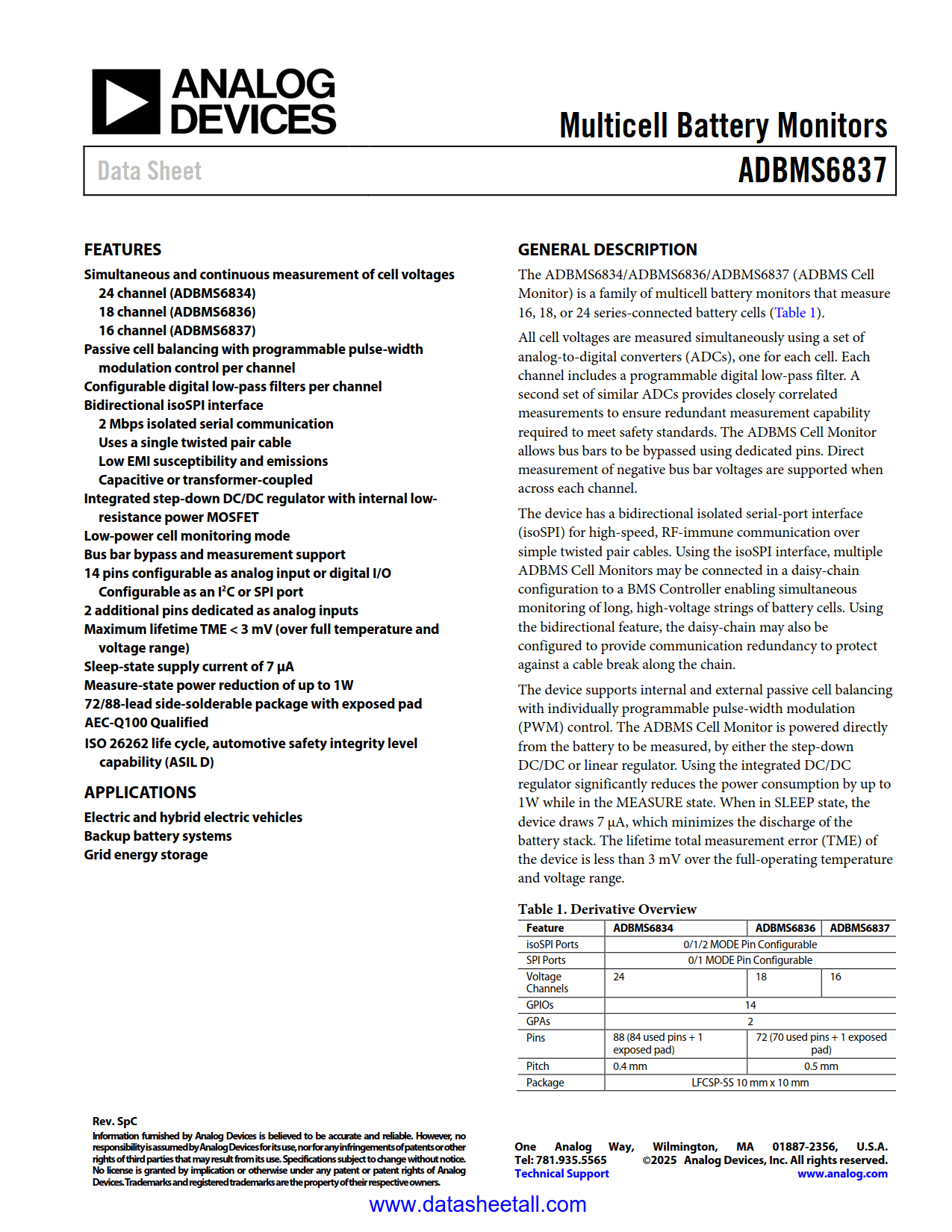
| Part No.: | ADBMS6837 |
| Page: | 2 Pages |
| Size: | 112 KB |
| Manufacturer: | Analog Devices, Inc. |
| Logo: |  |
| Views: | 0 |
| Update Time: | 2025-02-08 16:25:19 |
| DataSheet: | Download |
| Part No. | Packing | SPQ | Marking | MSL | Pins | Temp Range | Package Description | Buy |
| ADBMS6837WCCSZ | Tray | 168 | - | 3 | 72 | -40°C ~ 125°C | LFCSP | |
| ADBMS6837WCCSZ-RL | Reel | 2000 | - | 3 | 72 | -40°C ~ 125°C | LFCSP |
The ADBMS6837 (ADBMS Cell Monitor) is a family of multicell battery monitors that measure 24 series-connected battery cells.
All cell voltages are measured simultaneously using a set of analog-to-digital converters (ADCs), one for each cell. Each channel includes a programmable digital low-pass filter. A second set of similar ADCs provides closely correlated measurements to ensure redundant measurement capability required to meet safety standards. The ADBMS Cell Monitor allows bus bars to be bypassed using dedicated pins. Direct measurement of negative bus bar voltages are supported when across each channel.
The device has a bidirectional isolated serial-port interface (isoSPI) for high-speed, RF-immune communication over simple twisted pair cables. Using the isoSPI interface, multiple ADBMS Cell Monitors may be connected in a daisy-chain configuration to a BMS Controller enabling simultaneous monitoring of long, high-voltage strings of battery cells. Using the bidirectional feature, the daisy-chain may also be configured to provide communication redundancy to protect against a cable break along the chain.
The device supports internal and external passive cell balancing with individually programmable pulse-width modulation (PWM) control. The ADBMS Cell Monitor is powered directly from the battery to be measured, by either the step-down DC/DC or linear regulator. Using the integrated DC/DC regulator significantly reduces the power consumption by up to 1W while in the MEASURE state. When in SLEEP state, the device draws 7 μA, which minimizes the discharge of the battery stack. The lifetime total measurement error (TME) of the device is less than 3 mV over the full-operating temperature and voltage range.